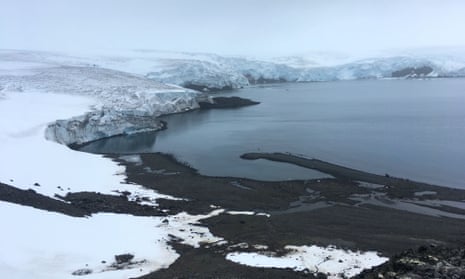California is a hotbed of climate change activism, so it perhaps wasn’t a surprise to see the cities of San Francisco and Oakland sue the world’s largest oil companies last year for allegedly knowing about the dire consequences of global warming while seeking to downplay or deny it.
More striking is the approach of the judge in the case, the unorthodox William Alsup. The judge, who previously learned coding techniques for a Silicon Valley lawsuit, has set out a list of questions for a climate change “tutorial” on the floor of the courtroom on Wednesday.
We’ve sought to help out the judge by answering his queries.
What caused the various ice ages (including the “little ice age” and prolonged cool periods) and what caused the ice to melt? When they melted, by how much did sea level rise?
The onset and decline of ice ages on Earth over the past few million years have been primarily influenced by slight changes in the Earth’s orbit around the sun, which alters the amount of sunlight bombarding the polar regions.
The last ice age started melting away around 19,000 years ago, which raised the global sea level by around 120 metres. The “little ice age” wasn’t a true ice age – rather a period of relative cooling in the northern hemisphere up until the 19th century, probably to do with volcanic eruptions and reduced solar activity. Since then, there has been a sharp decline in glaciers and sea ice driven by human-caused warming, rather than any other factor.
What is the molecular difference by which CO2 absorbs infrared radiation but oxygen and nitrogen do not?
It’s rather complex, but basically the molecules of gases such as carbon dioxide are able to bend and slow down solar radiation bouncing off the Earth and returning to space. Nitrogen and oxygen aren’t able to do this and so do not have the same greenhouse impact upon the planet.
What is the mechanism by which infrared radiation trapped by CO2 in the atmosphere is turned into heat and finds its way back to sea level?
Infrared radiation from the sun hits the Earth and reflects back off the surface. Greenhouse gases in the atmosphere intervene by trapping this heat and preventing it from escaping.
As the world’s factories, vehicles and farms pump out tens of billions of tons of greenhouse gases every year, this has caused the Earth to warm by around 1C (1.8F) over the past century.
Does CO2 in the atmosphere reflect any sunlight back into space such that the reflected sunlight never penetrates the atmosphere in the first place?
A bit, but not enough to really matter.
Apart from CO2, what happens to the collective heat from tailpipe exhausts, engine radiators, and all other heat from combustion of fossil fuels? How, if at all, does this collective heat contribute to warming of the atmosphere?
All that human activity does give off heat, although it’s dwarfed by the heating caused by greenhouse gases. The Intergovernmental Panel on Climate Change estimates this direct heat is around one hundredth the size of greenhouse gas-driven heat. The equation is slightly different in some large cities, however, due to the urban heat island phenomenon.
In grade school, many of us were taught that humans exhale CO2 but plants absorb CO2 and return oxygen to the air (keeping the carbon for fiber). Is this still valid? If so, why hasn’t plant life turned the higher levels of CO2 back into oxygen? Given the increase in human population on Earth (four billion), is human respiration a contributing factor to the buildup of CO2?
Alsup’s grade school was right – humans (and other animals) breathe in oxygen and exhale carbon dioxide. But this expulsion of CO2 is in balance with the world around us.
Say you eat a potato. In the months before you ate it, the potato grew by absorbing carbon dioxide from the atmosphere. Your meal provides you with some energy and you then breathe back out the CO2. So the process is essentially carbon neutral.
Extra carbon is being released into the atmosphere from burning fossil fuels, which have been buried in rocks for hundreds of millions of years. Plants and oceans are sucking up a huge amount of this extra CO2, but not all of it. The result is a warmer atmosphere and a warmer ocean.
What are the main sources of CO2 that account for the incremental buildup of CO2 in the atmosphere?
The burning of huge amounts of coal, oil and gas to power our homes, vehicles and factories.
Losing an area of world’s forests equivalent to the size of New Zealand each year through cutting and fire isn’t helping either.
What are the main sources of heat that account for the incremental rise in temperature on Earth?
The US Environmental Protection Agency chief, Scott Pruitt, is also puzzled by this one, but the scientific community has been clear – the primary cause of recent warming has been the emission of carbon dioxide, along with other gases such as methane.
Human activity is the “dominant cause of the observed warming since the mid-20th century” according to the US government’s latest climate assessment, with industrialization likely responsible for 0.6C to 0.8C in warming since the early 1950s.
